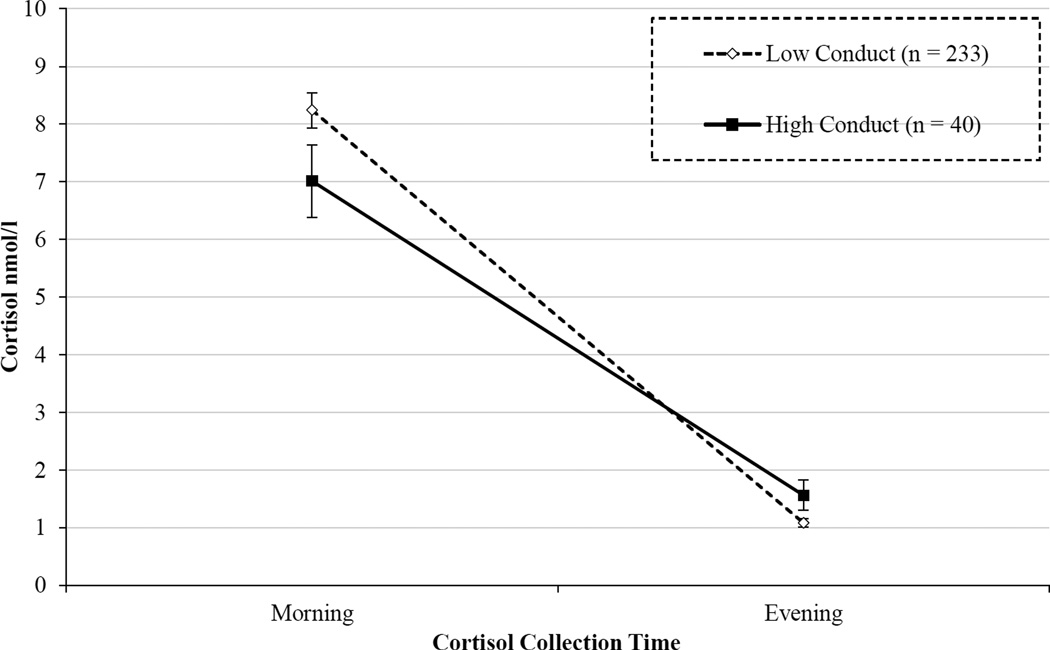Figure 2.
Age 6 diurnal cortisol rhythms of 9-year-old children with low versus high conduct problems. Children in the Low Conduct group scored < 3 and children in the High Conduct group score ≥ 3 on the CBCL Conduct Problems subscale. Children with more severe conduct problems at age 9 showed a more blunted diurnal cortisol rhythm across the day than children who have no/low conduct problems at age 9. Statistical analyses used a continuous measure of conduct problems, but groups were created for purposes of graphing.

